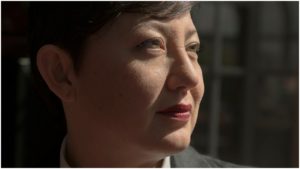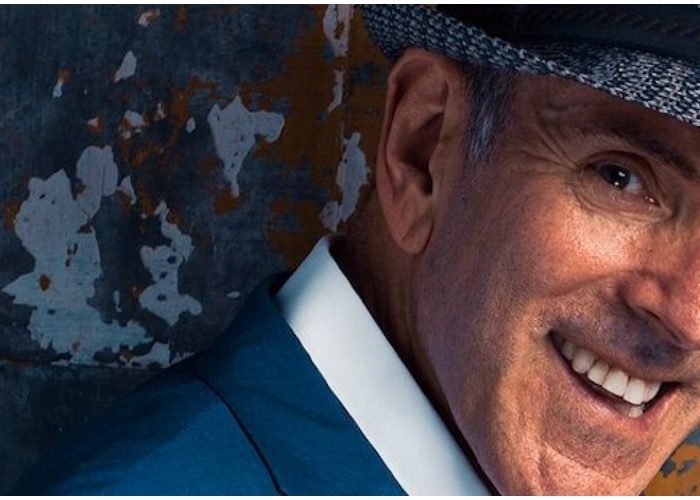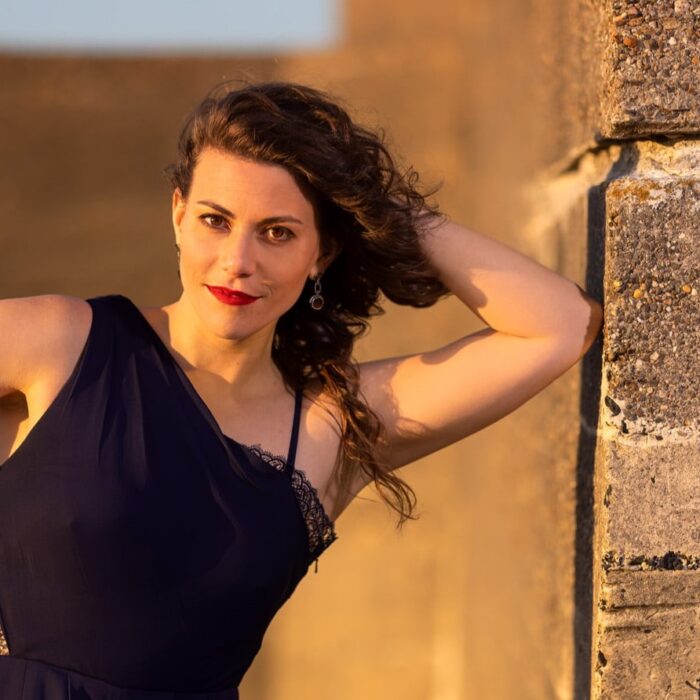
Q & A: Michi Wiancko On Writing Her First Opera ‘Murasaki’s Moon’
By Francisco SalazarOn May 17, 2019, the New York Opera Festival and On Site Opera will host the world premiere of Michi Wiancko and Deborah Brevoort’s opera “Murasaki’s Moon.” The work will be showcased at the Metropolitan Museum of Art and will be presented in conjunction with the Met’s exhibition “The Tale of Genji: A Japanese Classic Illumination.”
The work marks the first opera by Wiancko, a recognized composer and violinist who has collaborated with many prestigious artists and organizations like Missy Mazzoli, Steve Reich, Silkroad, Yo-Yo Ma, The Saint Paul Chamber Orchestra, Patricia Kopatchinskaja, Camerata Bern, The SPCO’s Liquid Music series, Aizuri Quartet, and Enso Quartet, Sybarite5, among others.
In anticipation of the world premiere of her first opera, Wiancko spoke with OperaWire about the process and the journey of creating “Murasaki’s Moon.”
OperaWire: What inspired you to write your first opera?
Michi Wiancko: I received a phone call out of the blue from Limor Tomer from the Met Museum asking me to be part of this project, and even though writing an opera had never been part of the vision I had for my life as a composer, I simply couldn’t say no.
Now that my final score is done and dusted, I can confidently say that I’ve been bitten by the bug. I expected to feel intimidated, but instead, I felt strangely at home during this creative process. Now my general attitude toward composing opera music is: “Bring it on!!”
OW: Having written so much incidental music, what was the difference of working on an opera and what were some of the challenges?
MW: With film music, I feel like more attention is given to interacting with the audience’s subconscious. The music needs to walk more of a tightrope and find a balance between subtly supporting what is likely to be rich drama, dialogue, and visuals, and creating a meaningful musical work that has integrity. With opera, music plays a more foundational role – it’s both a vehicle for the story and a destination in and of itself. I had the libretto for inspiration and initial structure, but from there I felt like I had so much creative freedom.
Opera is unlike any other composing I’ve ever done also because of the structure of the process. In this case, I only had a few short months to write the thing (which I learned later was a bit crazy and unheard of, but luckily at the time I didn’t have anything to compare it to!) and then there were a few months of workshopping and revisions. One exhilarating aspect of it for me was getting to be part of meetings that weren’t just about discussing the music, but the subtle qualities of a character or the nuance of a physical gesture. Having an opportunity to expand my creative mind past music and into words, theater, story, and human physicality just felt like pure fun, especially as part of a collaborative process with a great team.
OW: Tell me about your process working with librettist Deborah Brevoort and what you learned from it?
MW: Working with Deborah has been amazing. She’s such a pro and incredibly focused and experienced at her craft. In an unreasonably short amount of time, she wrestled this beast of a 1,200 page book into a beautifully sculpted libretto, which provided me with endless musical inspiration. I’ve found our collective process to feel really easy and natural, and have learned so much about storytelling and character development as it specifically pertains to opera. I’ve also really loved having the opportunity to luxuriate in words and phrases in a way I haven’t in the past – exploring the potential of different vowels and consonants, the colors of words, and the inherent musicality of a sentence.
OW: You received Opera America’s 2018 Female Composer Grant. How did it help you along the process and why was it important for this project?
MW: Receiving the grant from Opera America has been a thrilling part of this project. Not only did it provide me with crucial funding, OA has provided me with opportunities to be part of the contemporary opera community, which is absolutely invaluable. They invited me to be a guest at their New Works Forum in January, where I attended workshops, performances, talks, and had so many interesting conversations with people from all over the industry.
My musical background is rooted solidly in the classical music realm, but I still feel opera to be quite exotic! Opera America continues to send me invitations to fabulous happenings and continues to help me feel supported. To be a total newbie at something, but made to feel like you are still part of a community is something I’m extremely grateful for.
OW: Tell me about why it was important to work with a company like On Site Opera and how have they made this project even more interesting?
MW: One of the things I admire about On Site Opera is that it draws from traditional opera culture and process but at the same time is nimble, flexible and responsive to contemporary issues. [Director] Eric Einhorn is such a wonderful collaborator – he’s an amazing creative mind and a real source of positivity and support. He has a lot of faith in me as a composer and never fails to treat me like an equal, even while he tirelessly answers wave after wave of the types of questions only a first-time opera composer would ask. I’m extremely grateful for that!
OW: How does the story told in the opera reflects today’s society and female empowerment?
MW: What compels me the most about the story, which is really the story of Lady Murasaki more than it is the tale of Genji, is how Lady Murasaki turned to the art of writing for solace and meaning, despite the fact that she lived in the type of society that discouraged intellectual pursuits for women and prioritized physical beauty and status-by-marriage above all else.
I think she was a real rebel and went against the norm, even if that was a struggle for her at times. The message here that I love is one that I hope gets heard by girls and young women: If you don’t agree with the way life is being lived around you, or if you don’t fit in, don’t cave to the norm. Find your passion – the thing that makes you feel most like yourself – and embrace it.
OW: What musical colors inspired you and why did you decide on traditional Japanese instruments?
MW: I was raised to actively appreciate my Japanese heritage, and grew up playing the koto [a six-foot, 13-stringed plucked zither] in addition to the violin, so it seemed fitting to incorporate some traditional Japanese sounds into my work, which I like to blend with more western classical, new music, chamber-pop vibes. I’m not trying to make any point with it, nor am I trying intentionally to mash anything up or genre-jump. The simplest (and probably cheesiest-sounding) answer is that when I’m just being myself, this is what happens.
OW: When you wrote the vocal parts, did you have singers in mind or did it come afterward? What has the process been in working with the singers and was it the first time you have worked with singers?
MW: We didn’t know who our singers would be until much later in the process. I’ve written for voice, and have done some singing myself, but always in a pop or contemporary music context, never in the operatic style. For me, learning about all the ins and outs of various types of operatic voices and ranges held the steepest learning curve during this whole process…and then you study your brains out only to find that it turns out every human being, no matter their range classification, has a different voice and a different tessitura and different vocal quirks and sweet zones and danger zones particular to them, and you just have to spend time learning the vocal instrument of that particular artist.
OW: What do you hope audiences get from this piece and where do you see it in the future?
MW: First of all, I hope that audiences learn about the Tale of Genji, and appreciate the unexpected fact that the first novel known to man was written by a woman in Japan 1,000 years ago. I hope audiences feel inspired by the music and the story – not just through the lens of Asian culture, but through a more universal one as well. I’m excited for this work to be experienced by people of all ages and from different backgrounds. I would love for this production to tour a wide variety of performance venues and museum spaces around the country.


